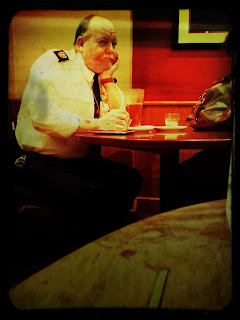Are we preparing our design students for the
reality of work in the industry? This question has been asked over and over, and
as a practitioner and educator myself, one that constantly crops up in
conversation.
The UK has a tremendous reputation for creativity,
and within its design education system, huge reserves of new talent. I do find that
in the first year of the degree programme, the students have to be taught how to
think both creatively and independently again, having been through a secondary education
system that focuses on collective results for league table standings rather than
the individuality of the arts.
Once de-institutionalised, there is of
course a danger that letting the creative student simply become self indulgent
will only result in folios resembling those of fine art students.
We need to remember we are in the business
of problem solving, graphic design is applied creativity. We must show our next
generation of creatives how to combine art and commerce, to make them fit for
purpose. I believe this has to be done by giving real life problems to be
solved in real life timescales. Of course, having said that, there must not be
too much emphasis on tight deadlines and commercially ready design, most
graphic design degrees are not vocational after all, and that would also make
the job of design agencies too easy. They do, seem to want their junior
designers to be the 'just add water' kind. I guess they simply don't want to
spend too much time actually showing them the industry from the four teas, all
with milk, two with sugar, one coffee, decaf of course, oh and pop out and get
some jammie dodgers and six jam doughnuts, up to the client presentation and
ego stroking end of the business.
So our challenge is to prepare students for
the realities of the studio, large or small, whilst leaving their imagination
free to wander. On the whole, I think we are getting it right, but as the title
of this rant suggests, we could do better.










































